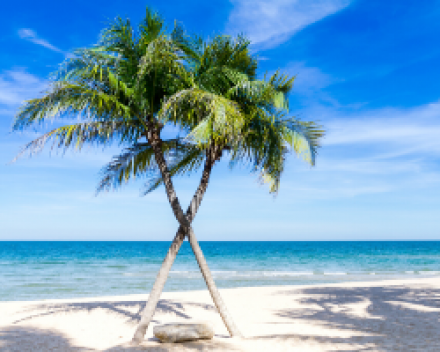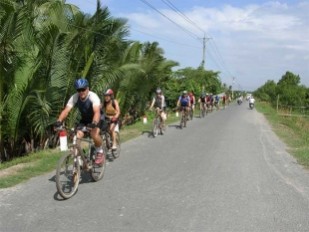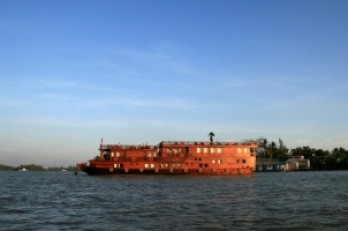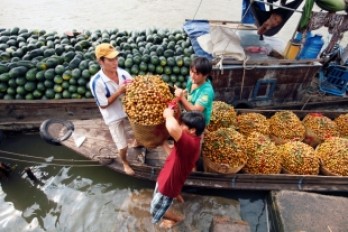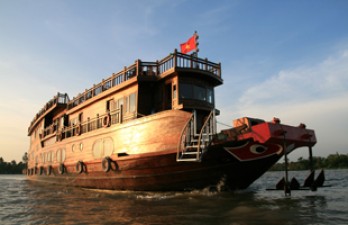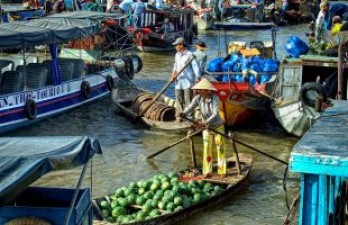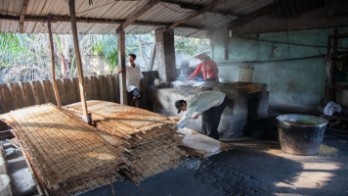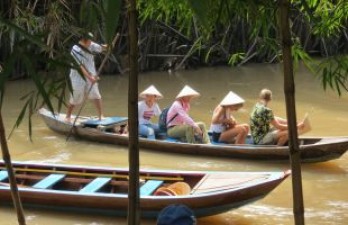Exploring the unique culture in the Mekong Delta region of Vietnam - Handspan Travel Indochina
2The Mekong Delta region of Vietnam possesses long stretches of fertile alluvial rivers. Besides stunning landscapes, the region is also famous for its rich cultural heritage and vibrant local life. Let’s explore the unique local culture in the Mekong Delta region of Vietnam with Handspan Travel Indochina!
Through this blog post, you will find out these pieces of information below.
Traditional clothes of the local people in the Mekong Delta region of Vietnam
The most basic characteristic when referring to the culture in the Mekong Delta region of Vietnam is the traditional clothes of the local people in the region. The agricultural lifestyle and the area's tropical climate have influenced the traditional clothing of the people in the region. Both men and women in the region wear the traditional Ao Ba Ba (Ba Ba shirt), a collarless shirt. For men, the Ba Ba shirt has two large pockets on the front. Whereas, for women, there are two small pockets. The Ba Ba shirt will also be flexibly accommodated to suit the wearer's body.
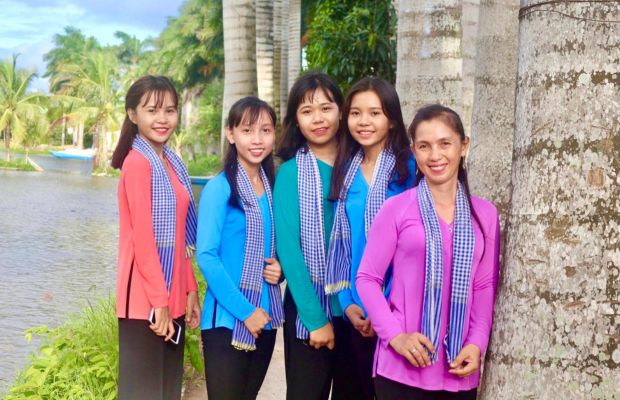
Local women in the Ba Ba shirt
Combined with the Ba Ba shirt are long black pants that reach the ankle or heel. No matter what color and style the Ba Ba shirt is, the local people in the Mekong Delta region of Vietnam always wear it with long black pants. Besides, an indispensable accessory for the Mekong Delta people is the traditional checkered black and white scarf. This scarf has many usages: wiping away sweat, sun protection, storing things, etc. For the local people in the region, the scarf is an indispensable item in life.
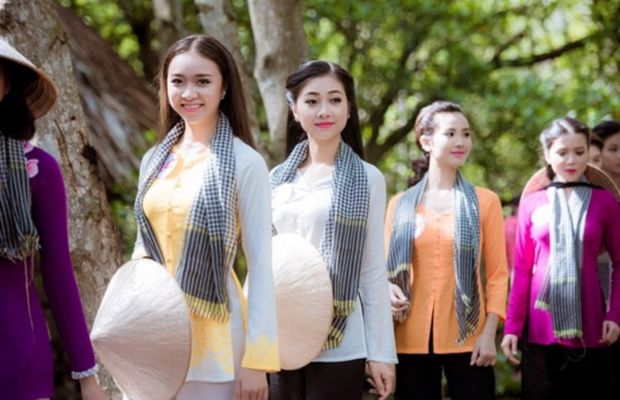
Local women in the Ba Ba shirt
Overall, these traditional garments reflect the cultural heritage and practical needs of the people living in the Mekong River. While modern clothing styles have become more prevalent in urban areas, traditional attire is still a beautiful characteristic of the culture in the Mekong Delta region of Vietnam.
Culinary culture
Culinary, undoubtedly, is one of the featured characteristics of the culture in the Mekong Delta region of Vietnam. The cuisine here is rich and diverse, influenced by the abundant resources of the region. They are the Mekong River and its tributaries, fertile land for agriculture, and a mix of ethnic groups. Every season, the region has its own specialties. Here are some typical features of the Mekong Delta region’s cuisine.
River cuisines
The cuisine in the Mekong Delta region of Vietnam is associated with rivers, freshwater fish, and seafood. Popular dishes include ca kho to (caramelized fish in a clay pot), canh chua (sour fish soup), and cha ca (grilled fish).
Noodles and soups
Noodle dishes are a significant part of Vietnamese cuisine and in the Mekong Delta in particular. Hu Tieu (Rice Noodle Soup) and Bun Mam (Fermented Fish Soup with Rice Vermicelli) are two delicious dishes you should not miss. Hu Tieu is a popular food in the Mekong Delta region of Vietnam. It features rice noodles served in a flavorful broth. It is often accompanied by various toppings such as pork, shrimp, squid, and herbs. Bun mam is a savory and flavorful soup. It is made from fermented fish broth, shrimp, pork, and various vegetables, and served with rice vermicelli noodles. Thanks to the rich and complex flavors, it has become a popular dish in the region.
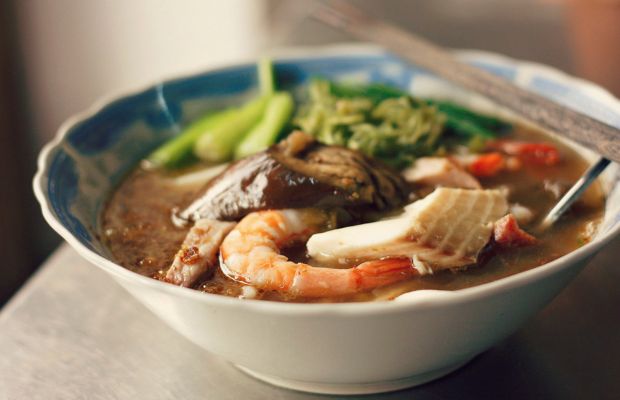
Fermented Fish Soup with Rice Vermicelli
Rice and Rice-based Dishes
The Mekong Delta region is the largest rice granary in Vietnam; therefore, rice and rice-based dishes are extremely popular here. Rice is not only eaten as a staple but also used to make various dishes. You can try com tam (broken rice), banh xeo (Vietnamese sizzling pancake), and banh trang tron (mixed rice paper salad).
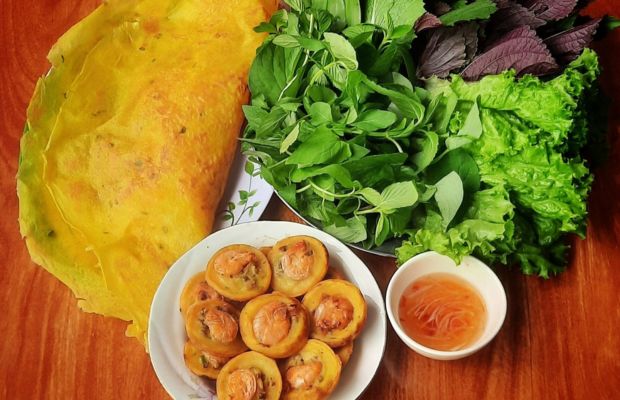
Banh xeo
Fruits and Vegetables
The Mekong Delta region of Vietnam is famous for its vast green fruit gardens. Traveling to the region, you can try different types of fruits, such as mango, grapefruit, star apple, longan, rambutan, etc. Vegetables such as water spinach and morning glory are also widely popular.
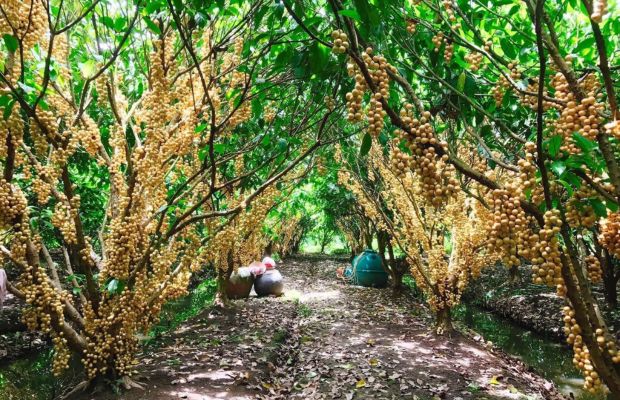
Phong Dien fruit garden
In general, cuisine is an important and indispensable part of the unique culture in the Mekong Delta region of Vietnam. Let’s travel to the region and savor the diverse tastes of this enchanting destination.
Unique River and Water Civilization
The Mekong Delta is one of the two places where the largest river civilization in Vietnam originated. This is the downstream area of the Mekong River, one of the largest rivers in the world. Thanks to the intricate network of waterways formed by the Mekong River and its tributaries, the river and water civilization has been a unique characteristic of the culture in the Mekong Delta region of Vietnam.
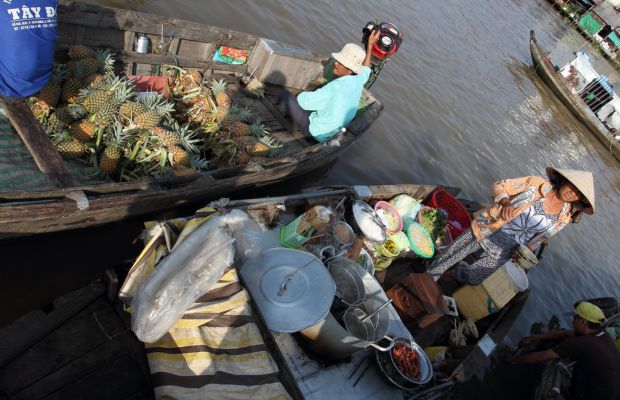
Having breakfast at the Mekong Delta region of Vietnam
Traveling to the Mekong Delta region of Vietnam, you will have a chance to have richer perspectives on the lifestyle of the local people whose lives are based on the river. Locals use boats and ferries to travel between villages, towns, and markets. Therefore, water transport has been an integral part of daily life.
The most outstanding aspect of the river and water civilization is the vibrant floating markets. Boats gather here to trade various goods such as fruits, vegetables, seafood, and handicrafts. Cai Rang and Cai Be are among the most well-known floating markets in the region, attracting tourists and locals alike. For more detailed information about outstanding floating markets in the region, please refer to our blog post here: Exploring vibrant floating markets in the Mekong Delta of Vietnam.
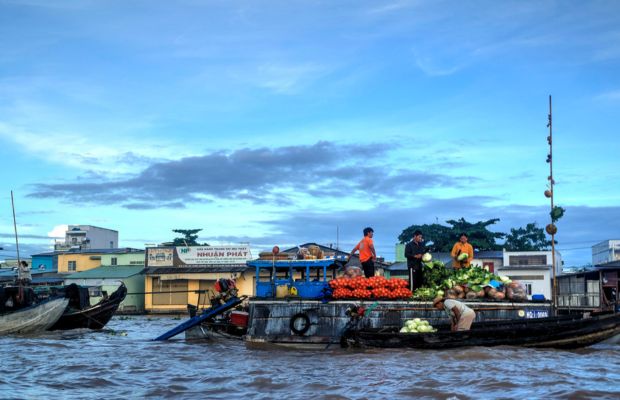
Cai Rang floating market
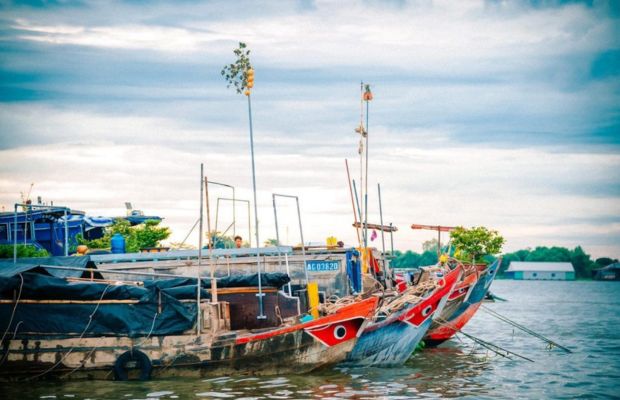
Long Xuyen floating market
Besides floating markets, the Mekong Delta region’s water civilization is also outstanding in aquaculture and agriculture. The fertile soil and abundant water resources of the Mekong Delta support a thriving agricultural industry. Locals practice aquaculture and cultivate crops such as rice, fruits, and vegetables in flooded fields known as "floating gardens" or "floating rice fields."
The art of performing Southern amateur music (Don ca tai tu Nam Bo)
The Sothern amateur music (Don ca tai tu Nam Bo), recognized as an intangible cultural heritage of humanity by UNESCO, is also among the featured aspects of the culture in the Mekong Delta region of Vietnam. This is a traditional art of performance that appeared in the 19th century, with a variety of performances and musical instruments. Don ca tai tu has its roots in the cultural exchanges between Southern Vietnam and various ethnic groups, including the Khmer, Cham, and Chinese communities.
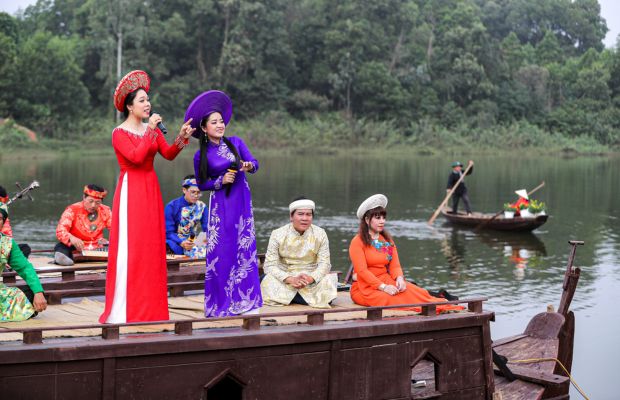
Performing the Southern amateur music
Traveling to the Mekong Delta region of Vietnam, you should not miss listening to this unique type of music. Don ca tai tu combines elements of music, poetry, and performance. It features a small ensemble of musicians playing traditional instruments such as the đàn tranh (16-string zither), đàn bầu (monochord), đàn nhị (two-string fiddle), đàn cò (bamboo flute), and various percussion instruments. The music is characterized by its melodic and rhythmic complexity, improvisation, and emotional expression. Each performance of Don Ca Tai Tu includes a wide range of traditional melodies and songs, many of which are based on folk tunes and poetic lyrics that reflect the themes of love, nostalgia, and rural life.
In general, Don ca tai tu plays a significant role in Southern Vietnamese culture, serving as a form of entertainment, social bonding, and cultural expression. Not only on special occasions like festivals and weddings, you can also enjoy this type of music at communal events and the weekends in the floating markets.
The Mekong Delta region of Vietnam - a place where ethnic cultures collide
The culture in the Mekong Delta region of Vietnam has a combination of many ethnic cultures, such as the Kinh, Khmer, Cham, Chinese, etc. Each ethnic group brings its own language, traditions, customs, and beliefs, enriching the cultural mosaic of the region. Religious sites such as pagodas, temples, churches, and mosques dot the landscape, serving as spiritual centers and focal points for community gatherings and festivals. The best way to explore the culture of the region is by visiting the outstanding temples and pagodas here to learn about the architecture of those temples and pagodas. Vam Ray Pagoda and Ang Pagoda in Tra Vinh, Doi Pagoda in Soc Trang, and Vinh Trang Pagoda in Tien Giang are some proofs of the cultural combination in the Mekong Delta region of Vietnam.
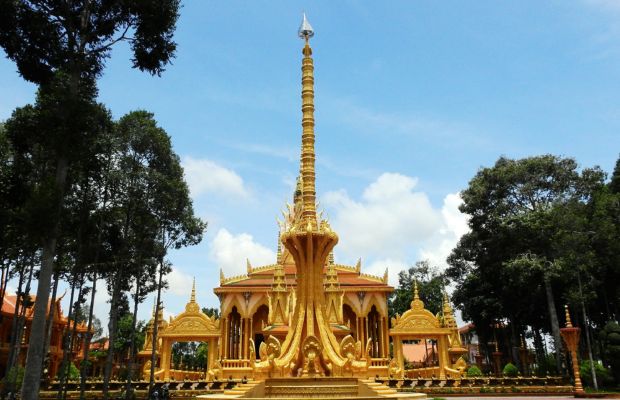
Vam Ray Pagoda
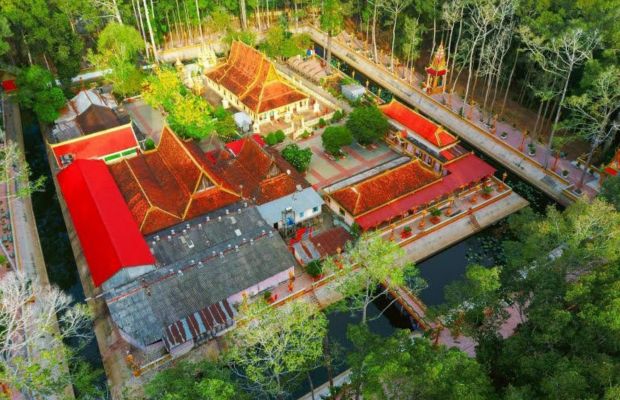
Ang Pagoda
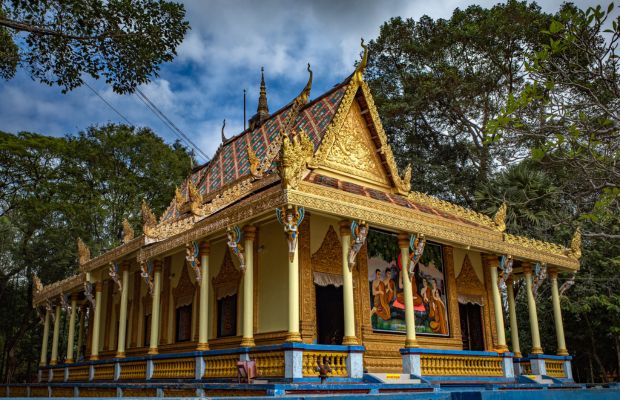
Doi Pagoda
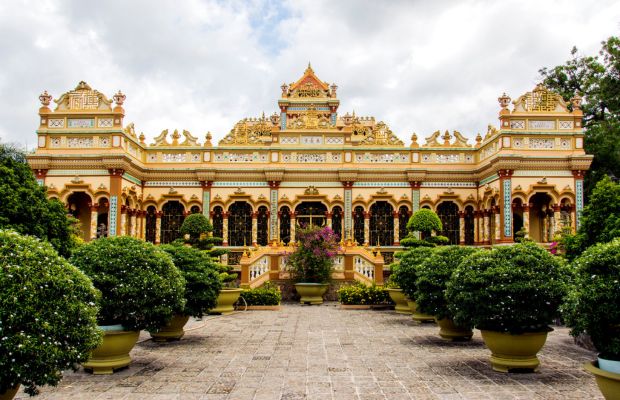
Vinh Trang Pagoda
Besides, thanks to the mixture of ethnic cultures, the Mekong Delta region of Vietnam has many unique and exciting festivals. Throughout the year, the Mekong Delta comes alive with colorful festivals and celebrations. These festivals showcase the cultural heritage of its diverse ethnic communities. These include traditional Lunar New Year (Tet) celebrations, the Sen Do Ta festival, the Ok Om Bok festival, the Neak Ta worship festival, the Nghinh Ong festival, etc. Each festival has its own featured characteristics and attracts many tourists.
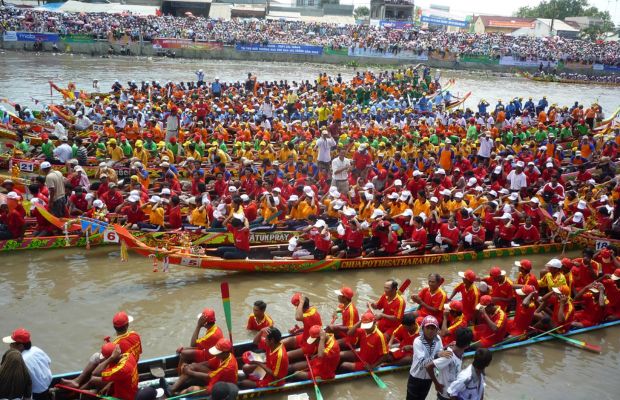
Ok Om Bok Festival
In conclusion, the culture in the Mekong Delta region of Vietnam is outstanding with the traditional clothes, cuisine, water civilization, music art, and festivals. If you travel to the region, don’t miss out on the opportunity to learn about this unique culture. If you would like to have more information, don’t hesitate to contact our team. Besides, you can refer to our Mekong Delta tour packages here: Mekong Delta (12 tours).
__logo.png)
__hanoi-water-puppets.jpg)
__angkor-wat-blue-reflections.jpg)
__vientiane-buddha-park-monks.jpg)
